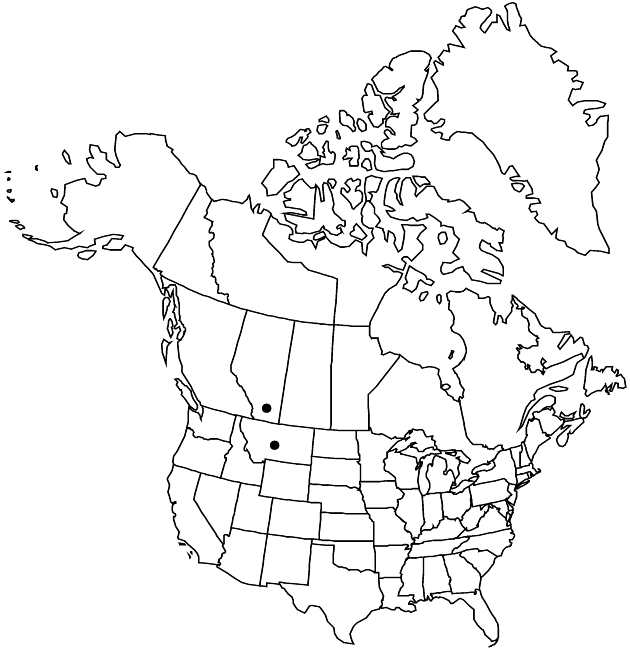Erigeron lackschewitzii
Madroño 30: 245, fig. 1. 1983.
Perennials, 3.5–8 cm; taprooted, caudices simple or branched, relatively long, woody. Stems erect (scapiform), loosely white lanate-villous, sometimes sparsely minutely glandular. Leaves basal (persistent) and cauline (leaf-bases broadened or not, not thickened and whitish-indurate); basal blades linear-oblanceolate to narrowly oblanceolate, 20–60 × 1.2–3 mm, cauline (on proximal 1/2 of stems) similar to basal or slightly reduced, margins entire (apices acute), adaxial faces loosely strigose to villous (or hairs mixed, appressed and spreading), abaxial glabrate, eglandular. Heads 1. Involucres 6–8 × 12–17 mm. Phyllaries in 3 series, densely white-villous (hairs sometimes with blackish purple cross-walls), densely minutely glandular. Ray-florets 30–68; corollas purple to lavender, 8–11 mm, laminae coiling. Disc corollas 3.5–4.3 mm. Cypselae 2.3–2.8 mm, 2-nerved, faces strigose; pappi: outer of setae and scales, inner of 15–24 bristles.
Phenology: Flowering Jul–Aug.
Habitat: Rocky slopes and ridges, terraces, talus, dry meadows, usually calcareous
Elevation: 2200–2500 m
Discussion
Erigeron lackschewitzii is closely similar to E. ochroleucus and perhaps derived from it.
Selected References
None.
